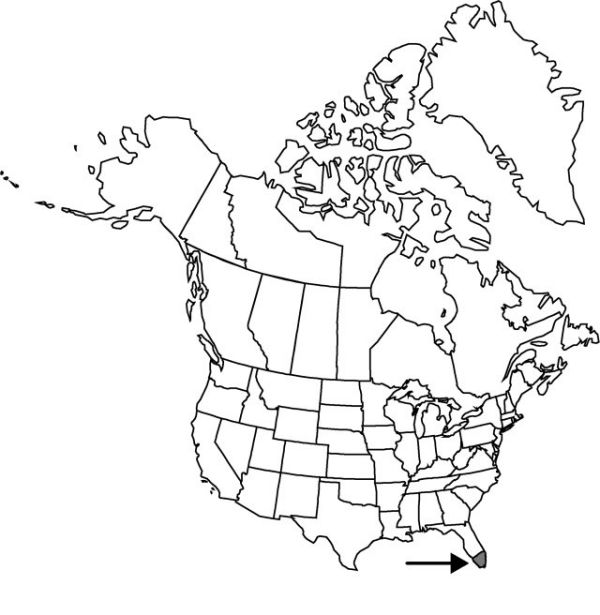Prosthechea pygmaea
Phytologia 82: 380. 1998.
Plants creeping, to 12 cm. Stems: pseudobulbs spaced 3–4 cm, fusiform, somewhat flattened, slender, 20–40 × 3–8 mm. Leaves 2 (–3, rarely), elliptic, 25–55 × 9–13 mm. Inflorescences racemes, sessile, 0.5 cm. Flowers 1–3, resupinate, successive, flowers and fruits may present with capsules, light yellowish green to green or brownish green; sepals oblanceolate, apex acute; lateral sepals oblique, 5–6 × 2 mm; petals linear, 4 × less than 1 mm, apex acute; lip white with purple blotch on middle lobe, obreniform, middle lobe small, triangular, apex acute, lateral lobes suborbiculate, embracing column, 4 × 2 mm; anthers 1, orange; column white, 2 mm, apex 3-toothed. Capsules 1 cm.
Phenology: Flowering Oct–Feb; fruiting Feb–May.
Habitat: In swamps, infrequent but individual plants form large patches
Elevation: 0–30 m
Distribution

Fla., Mexico, West Indies, Central America, n South America
Discussion
In Florida, flowers of some plants of Prosthechea pygmaea have been reported to be cleistogamous (C. A. Luer 1972).
Selected References
None.
Lower Taxa
"narrower" is not a number.